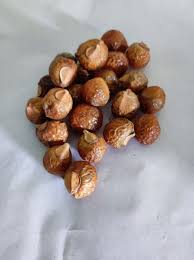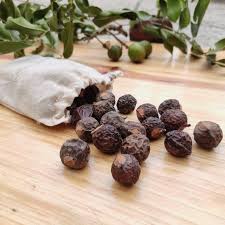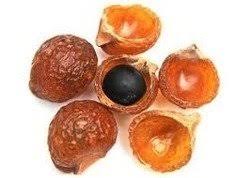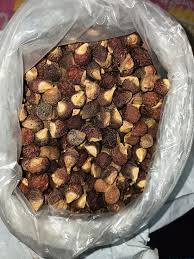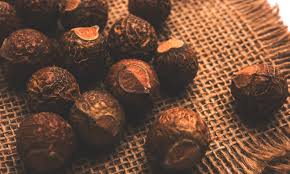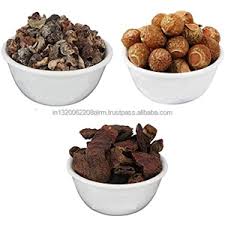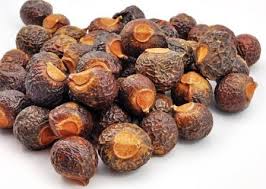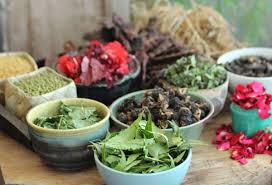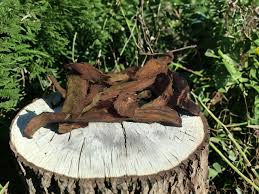Amla in Traditional Medicine: History and Uses
Amla, also known as Indian Gooseberry (Emblica officinalis), has been a cornerstone of traditional medicine in India and across Asia for thousands of years. Revered in Ayurveda, Unani, and Siddha systems of healing, Amla is celebrated for its rejuvenating, detoxifying, and strengthening properties. Its mention can be traced back to ancient scriptures, where it was called the “divine fruit” or “Rasayana” — a substance that enhances life, health, and longevity.
In today’s world of synthetic supplements and quick fixes, Amla stands out as a time-tested natural remedy. In this article, we explore the historical significance of Amla in traditional medicine, its healing properties, and how it continues to serve as a powerful natural remedy for modern health concerns.
Amla in Traditional Medicine: History and Uses
✅ Historical Significance of Amla
🔹 In Ayurveda
Amla has been extensively described in Charaka Samhita and Sushruta Samhita, two foundational texts of Ayurveda. It is classified under “Rasayana” herbs, which are known to promote youthfulness, immunity, and vitality.
Considered tridoshic – balances Vata, Pitta, and Kapha
Included in many Ayurvedic formulations like Chyawanprash, Triphala, and Brahma Rasayana
Used in Panchakarma therapies for detoxification and rejuvenation
Quote from Ayurveda:
“Amla is the best among rejuvenating herbs.” – Charaka Samhita
🔹 In Unani Medicine
In Unani, Amla is known as Amlaj. It is used to improve digestion, treat liver disorders, and enhance brain function.
Known as a cooling, astringent, and tonic herb
Commonly used in Majoon, Sharbat, and Habb preparations
Applied in treating jaundice, ulcers, and fatigue
🔹 In Siddha Medicine
Siddha texts mention Amla (called Nellikkai) as a universal remedy:
Used for skin disorders, hair care, and immune boosting
Combined with other herbs for long-term rejuvenation
Highly recommended for aging and metabolic health
✅ Mythological and Cultural Importance
In Hindu mythology, Amla is associated with Lord Vishnu and considered sacred.
During the Amla Navami festival, the tree is worshipped as a source of healing.
In ancient texts, it is believed that a drop of Amrit (elixir) fell on Earth and became the Amla tree.
🟢 Key Traditional Uses of Amla in Ancient Medicine
- Immunity and Rejuvenation (Rasayana)
Amla is a classic rasayana – it builds Ojas (vital life force), strengthens tissues, and enhances resistance to disease.
Boosts white blood cells and fights infections
Increases longevity and slows aging
Used in Chyawanprash, a famous immunity tonic
- Digestive and Gut Health
Amla is known for its deepan (appetizer) and pachan (digestive) properties.
Stimulates digestive enzymes
Treats acidity, constipation, and bloating
Strengthens liver and regulates bile secretion
Used in ancient formulations like:
Triphala (Amla + Haritaki + Bibhitaki)
Amla Avaleha for acidity and gut detox
- Liver Cleanser and Blood Purifier
Traditional healers have used Amla to:
Cleanse the liver and support bile flow
Remove toxins from the blood
Treat jaundice and skin eruptions
Often used in:
Sharbat Amla
Unani liver tonics
- Skin Brightening and Anti-Aging
Amla’s internal and external use improves complexion and skin texture.
Rich in antioxidants and Vitamin C
Delays wrinkles and reduces pigmentation
Applied as paste or infused oil on the skin
Used in:
Ayurvedic face masks
Siddha formulations for blemishes
- Hair Strengthening and Scalp Nourishment
Perhaps the most popular traditional use of Amla is for hair care:
Prevents premature graying
Strengthens hair roots
Treats dandruff and scalp infections
Used in:
Amla oil, Kesh Taila, Hair lep (masks)
Herbal hair dyes and shampoos
- Eye and Brain Tonic
According to ancient texts, Amla is highly beneficial for the eyes and mind.
Enhances vision and reduces eye strain
Improves memory, focus, and mental clarity
Cools the nervous system
Used in:
Triphala ghrita
Brahma Rasayana
- Urinary and Metabolic Health
In Unani and Siddha systems, Amla is prescribed for:
Treating urinary infections
Reducing blood sugar levels
Managing obesity and cholesterol
Combined with:
Neem, Guduchi, Guggul, and Ashwagandha
- Reproductive and Hormonal Balance
Amla supports reproductive health in both men and women:
Enhances fertility and vitality
Regulates menstrual cycles
Supports postnatal recovery
Used in:
Ashokarishta, Dashmoolarishta, and Rasayanas
🟢 Modern Science Validates Traditional Wisdom
Scientific studies have proven that Amla has:
Antioxidant effects – Fights oxidative stress
Hepatoprotective effects – Protects the liver
Antidiabetic properties – Regulates blood sugar
Immunomodulatory action – Boosts immune response
Antimicrobial properties – Fights bacteria and viruses
Researchers confirm that many traditional uses of Amla are scientifically accurate and highly beneficial in modern lifestyle-related disorders.
✅ How to Incorporate Amla Today (Inspired by Traditional Medicine)
Form Use Benefits
Raw Amla Eat slices or make chutney Full nutrient spectrum
Amla Juice Morning detox drink Liver cleanse and immunity
Amla Powder Mix with honey/water Hair, skin, and digestion
Chyawanprash Tonic with milk Rasayana, rejuvenation
Amla Oil Apply on scalp Hair growth and dandruff
Triphala Night-time detox Gut and colon health
✅ Who Should Use Amla (As Per Traditional Medicine)
Students – For memory and focus
Elderly – For longevity and joint health
Women – For hormonal balance
Men – For vitality and stamina
Children – For immune strengthening
Those with chronic fatigue or digestive issues
✅ Precautions in Traditional Use
Avoid Amla with milk directly – causes digestive imbalance
In extreme cold weather, take Amla with ginger or honey
Always consume in moderation — too much can aggravate vata
Use organic or wild-harvested Amla for authenticity
✅ Conclusion
Amla’s legacy in traditional medicine is both ancient and powerful. Its use spans multiple systems of healing — Ayurveda, Unani, and Siddha — all recognizing it as a universal healer. Whether you’re looking to boost immunity, improve digestion, enhance beauty, or support long-term wellness, Amla offers a natural and holistic solution.
By understanding its history, traditional uses, and modern applications, we can truly appreciate the timeless value of this miraculous fruit. At Dirghaanshi, we promote such nature-backed remedies to help people live better, healthier lives — in alignment with traditional wisdom.


